Abstract
A live attenuated Yersinia pestis (Pasteurella pestis) vaccine strain designated EV51f, which had been passaged through guinea pigs previously treated with ferrous sulfate, was shown to be pathogenic for African green vervet monkeys (Cercopithecus aethips pygerythrus), but not for guinea pigs. The bacilli multiplied in the monkeys, as shown by positive blood cultures, caused an elevation of white cell counts and rectal temperatures, and resulted in death of 26% (13/50) of animals. Postmortem findings of these animals were typical of bubonic-septicemic plague. This vaccine did not cause deaths in 50 guinea pigs even in doses up to 100 million viable bacilli inoculated subcutaneously. It is suggested that the virulence of an attenuated Y. pestis strain which does not produce pigment on a defined medium containing hemin, but possesses all other known virulence determinants, is dependent on the availability of iron in vivo. The serological response of the monkeys as determined by the hemagglutinating and mouse protective antibodies was high one month after vaccination and also in guinea pigs, as shown by virulent challenge. This antibody level declined in monkeys over a period of nearly 6 months, and a decline in immunity was confirmed by virulent challenge which resulted in the death of 30% of vaccinated monkeys. The level of immunity in monkeys did not appear to be related to the dose of vaccine.
Full text
PDF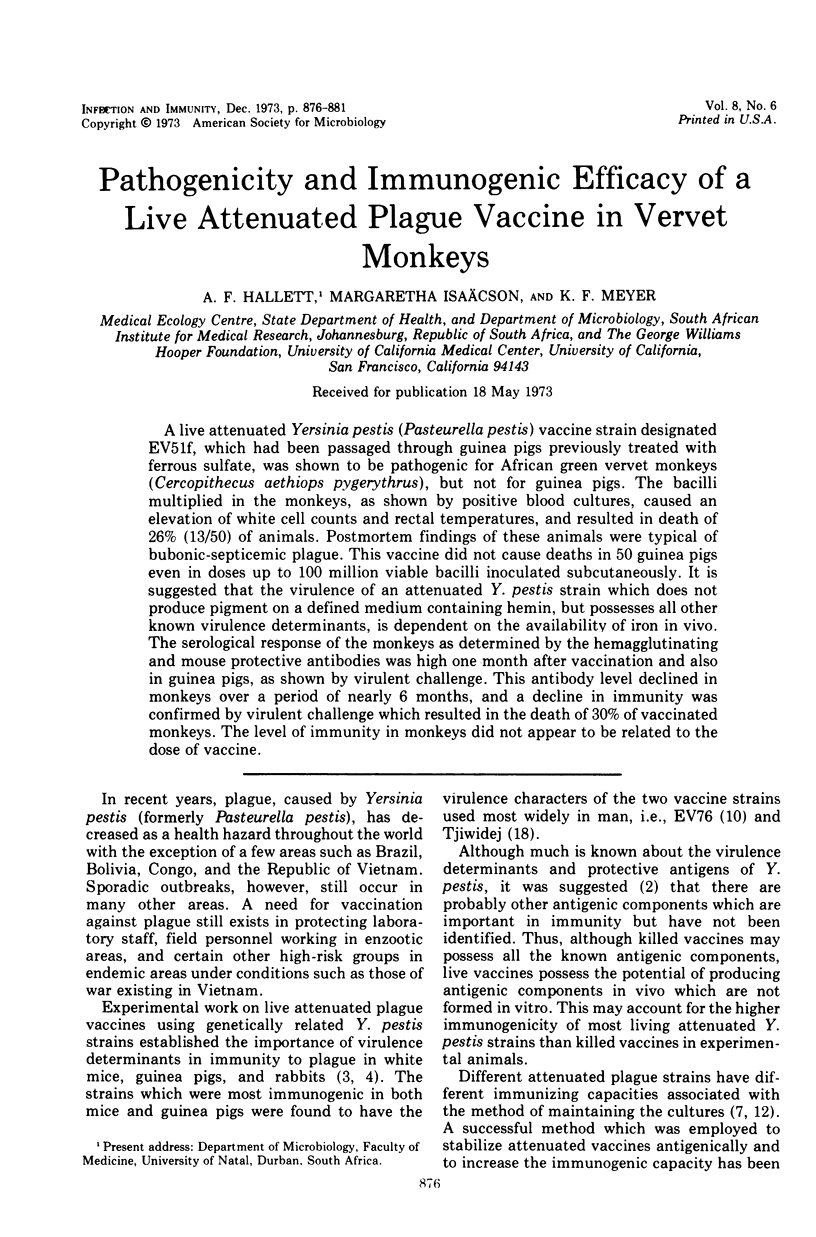
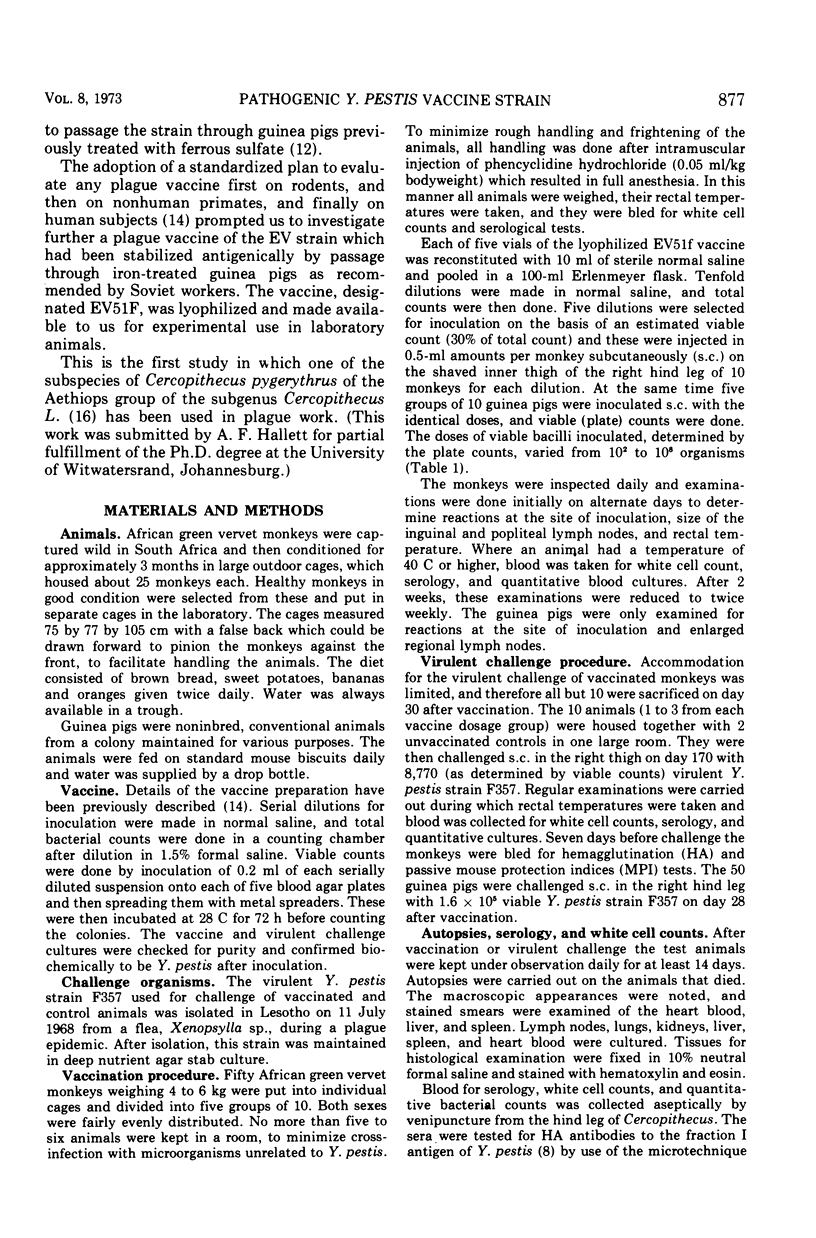
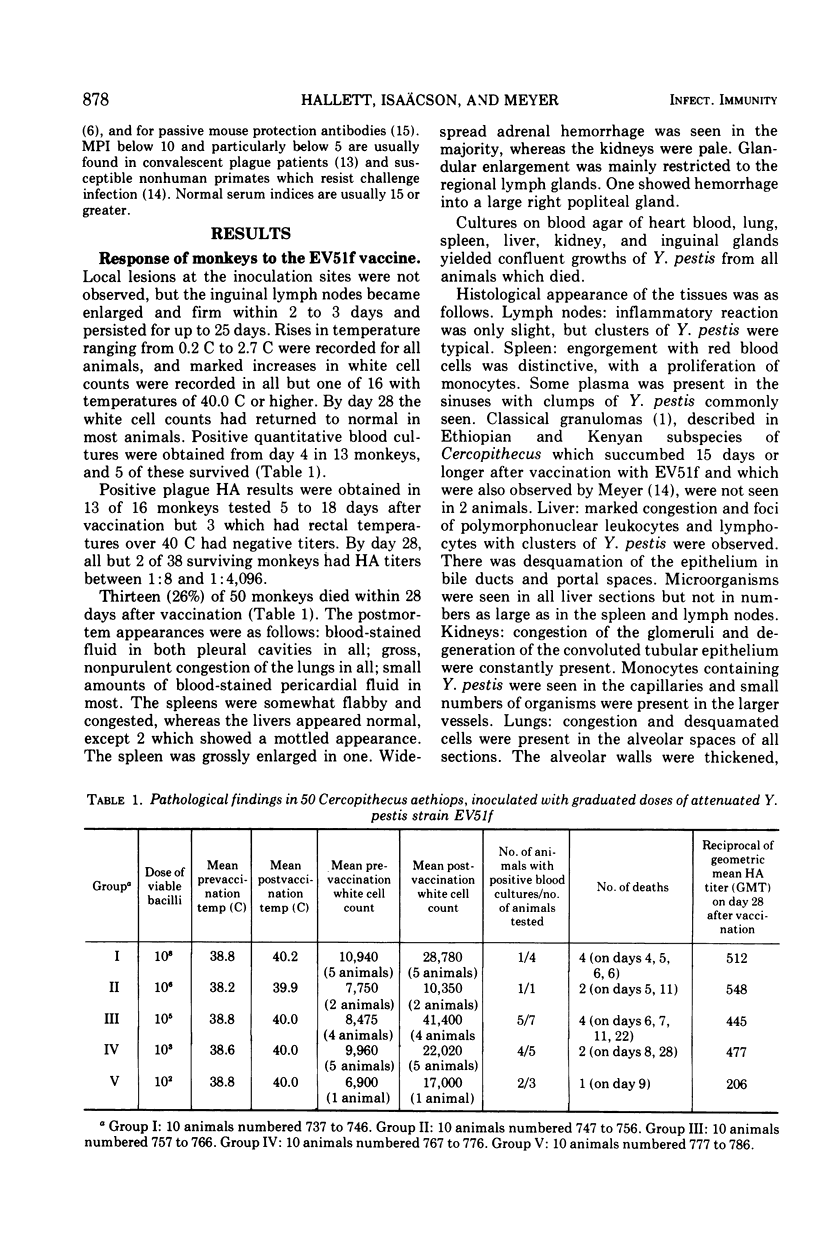
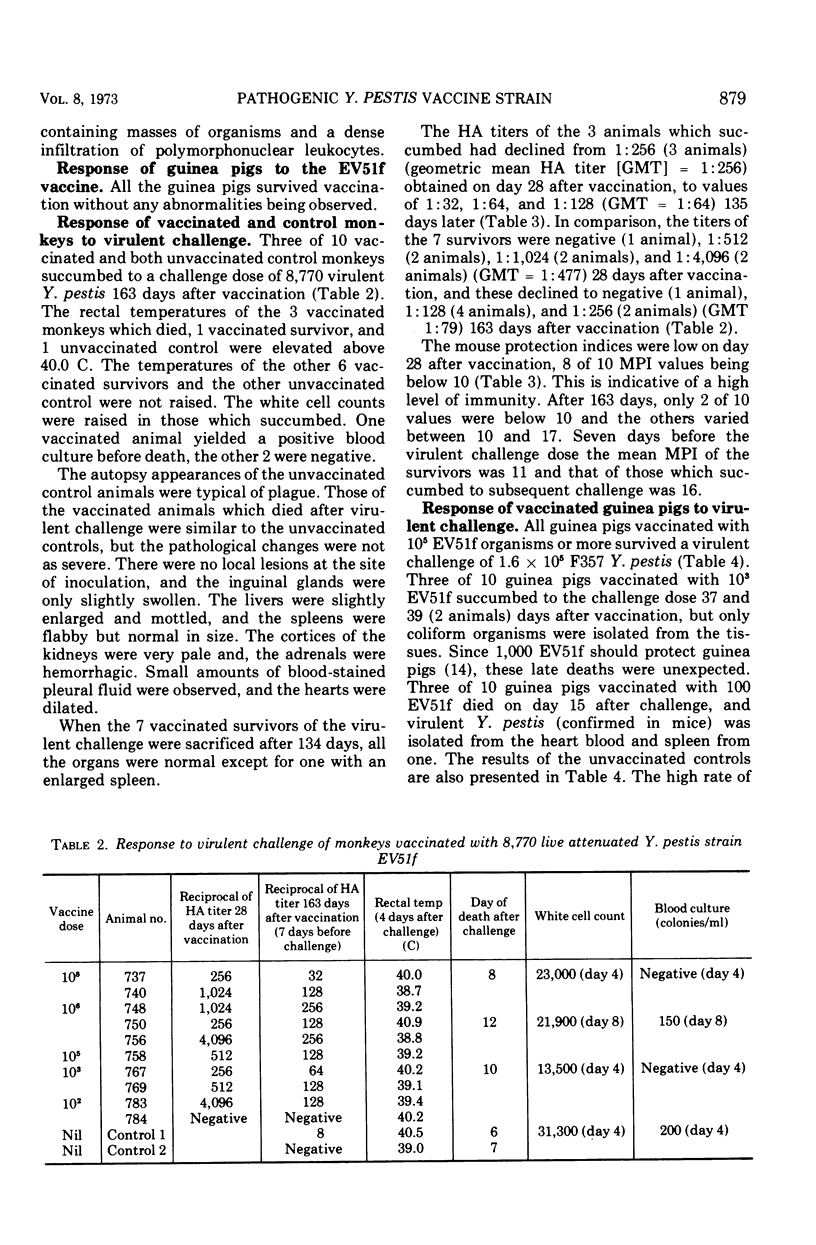
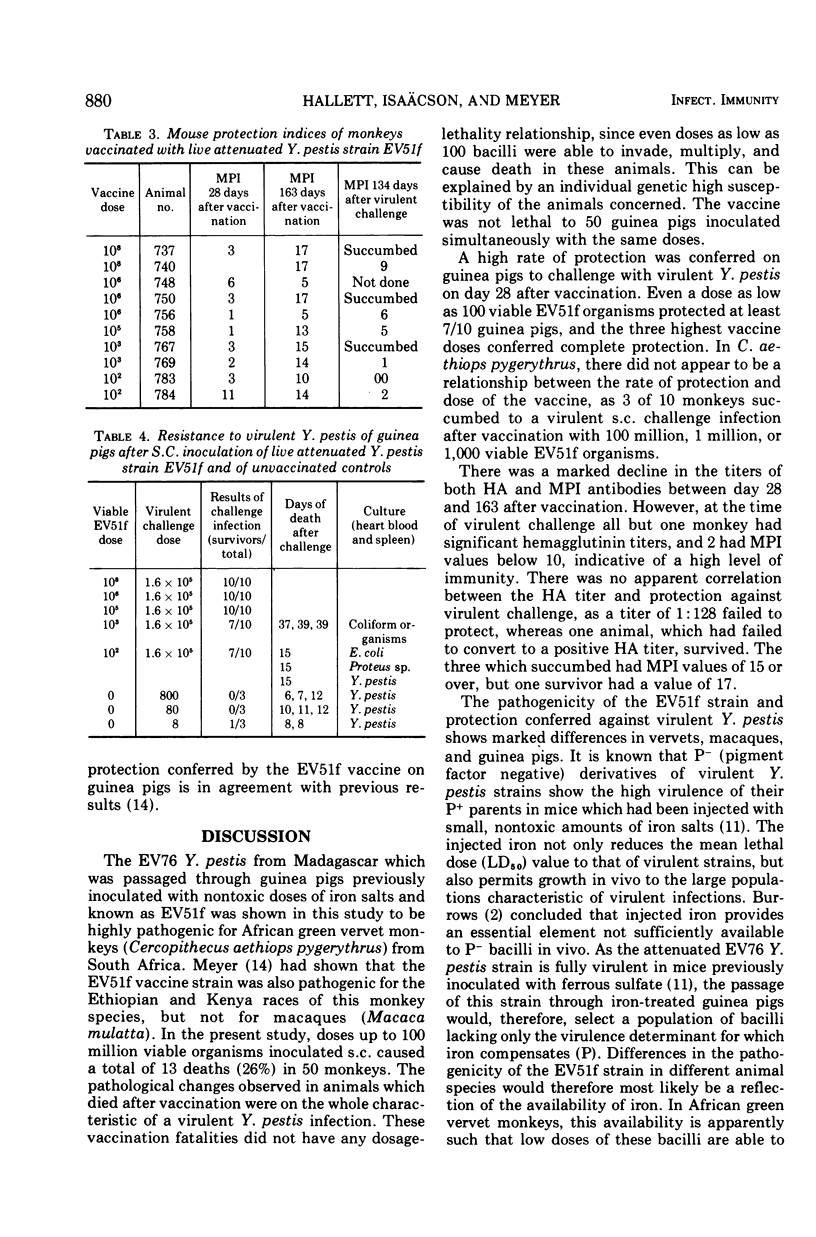
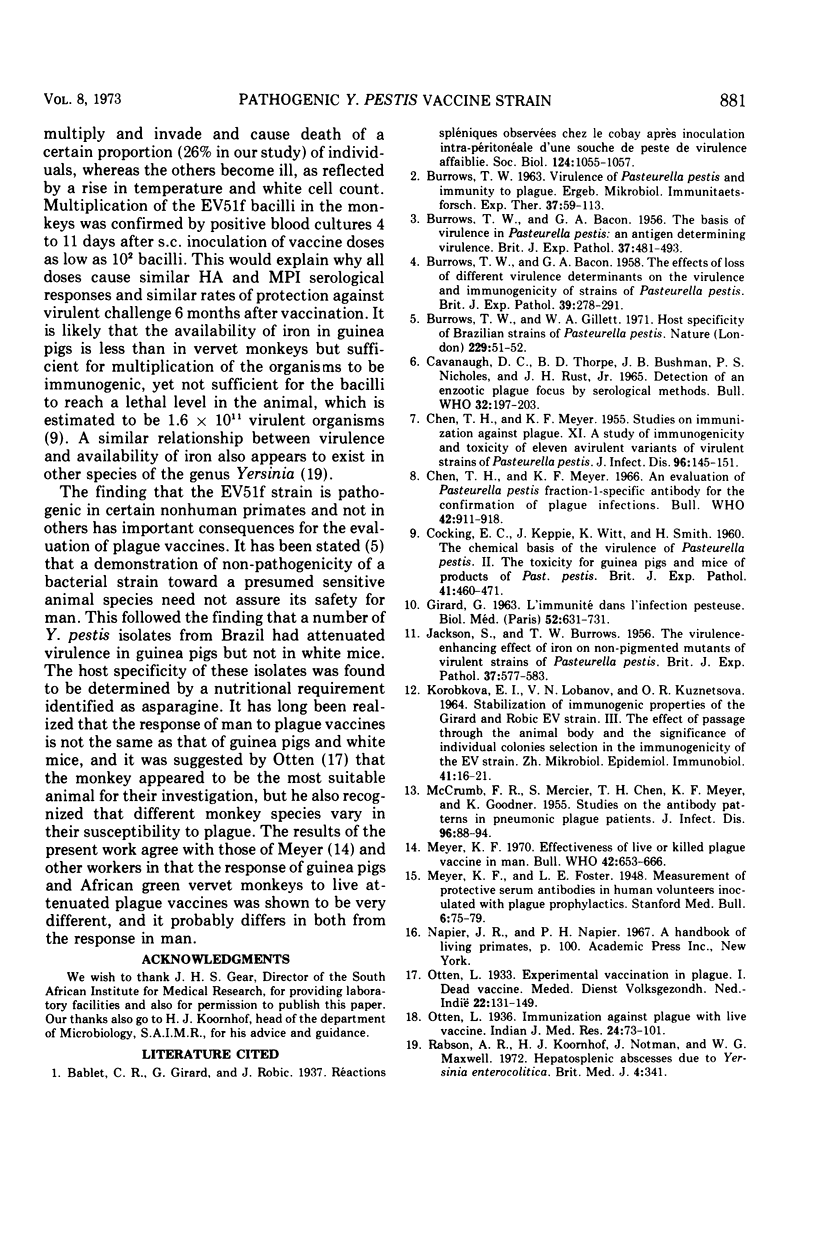
Selected References
These references are in PubMed. This may not be the complete list of references from this article.
- BACON G. A., BURROWS T. W. The basis of virulence in Pasteurella pestis: an antigen determining virulence. Br J Exp Pathol. 1956 Oct;37(5):481–493. [PMC free article] [PubMed] [Google Scholar]
- BURROWS T. W., BACON G. A. The effects of loss of different virulence determinants on the virulence and immunogenicity of strains of Pasteurella pestis. Br J Exp Pathol. 1958 Jun;39(3):278–291. [PMC free article] [PubMed] [Google Scholar]
- BURROWS T. W., JACKSON S. The virulence-enhancing effect of iron on nonpigmented mutants of virulent strains of Pasteurella pestis. Br J Exp Pathol. 1956 Dec;37(6):577–583. [PMC free article] [PubMed] [Google Scholar]
- BURROWS T. W. VIRULENCE OF PASTEURELLA PESTIS AND IMMUNITY TO PLAGUE. Ergeb Mikrobiol Immunitatsforsch Exp Ther. 1963;37:59–113. doi: 10.1007/978-3-662-36742-1_2. [DOI] [PubMed] [Google Scholar]
- Burrows T. W., Gillett W. A. Host specificity of Brazilian strains of Pasteurella pestis. Nature. 1971 Jan 1;229(5279):51–52. doi: 10.1038/229051a0. [DOI] [PubMed] [Google Scholar]
- CAVANAUGH D. C., THORPE B. D., BUSHMAN J. B., NICHOLES P. S., RUST J. H., Jr DETECTION OF AN ENZOOTIC PLAGUE FOCUS BY SEROLOGICAL METHODS. Bull World Health Organ. 1965;32:197–203. [PMC free article] [PubMed] [Google Scholar]
- CHEN T. H., MEYER K. F. Studies on immunization against plague. XI. A study of the immunogenicity and toxicity of eleven avirulent variants of virulent strains of Pasteurella pestis. J Infect Dis. 1955 Mar-Apr;96(2):145–151. doi: 10.1093/infdis/96.2.145. [DOI] [PubMed] [Google Scholar]
- COCKING E. C., KEPPIE J., WITT K., SMITH H. The chemical basis of the virulence of Pasteurella pestis. II. The toxicity for guinea-pigs and mice of products of Past, pestis. Br J Exp Pathol. 1960 Oct;41:460–471. [PMC free article] [PubMed] [Google Scholar]
- Chen T. H., Meyer K. F. An evaluation of Pasteurella pestis fraction-1-specific antibody for the confirmation of plague infections. Bull World Health Organ. 1966;34(6):911–918. [PMC free article] [PubMed] [Google Scholar]
- GIRARD G. L'IMMUNIT'E DANS L'INFECTION PESTEUSE. ACQUISITIONS APPORT'EES PAR 30 ANN'EES DE TRAVAUX SUR LA SOUCHE DE "PASTEURELLA PESTIS EV" (GIRARD ET ROBIC) Biol Med (Paris) 1963 Nov-Dec;52:631–731. [PubMed] [Google Scholar]
- KOROBKOVA E. I., LOBANOV V. N., KUZNETSOVA O. R. O STABILIZATSII IMMUNOGENNYKH SVO ISTV SHTAMMA EV ZHIRARA I ROBIKA. III. VLIIANIE PASSIROVANIIA CHEREZ ORGANIZM ZHIVOTNYKH I ZNACHENIE OTBORA OTDEL'NYKH KOLONI I V IMMUNOGENNOSTI SHTAMMA EV. Zh Mikrobiol Epidemiol Immunobiol. 1964 Feb;41:16–21. [PubMed] [Google Scholar]
- McCRUMB F. R., Jr, MERCIER S., CHEN T. H., MEYER K. F., GOODNER K. Studies on the antibody patterns in pneumonic plague patients. J Infect Dis. 1955 Jan-Feb;96(1):88–94. doi: 10.1093/infdis/96.1.88. [DOI] [PubMed] [Google Scholar]
- Meyer K. F. Effectiveness of live or killed plague vaccines in man. Bull World Health Organ. 1970;42(5):653–666. [PMC free article] [PubMed] [Google Scholar]
- Rabson A. R., Koornhof H. J., Notman J., Maxwell W. G. Hepatosplenic abscesses due to Yersinia enterocolitica. Br Med J. 1972 Nov 11;4(5836):341–341. doi: 10.1136/bmj.4.5836.341. [DOI] [PMC free article] [PubMed] [Google Scholar]


